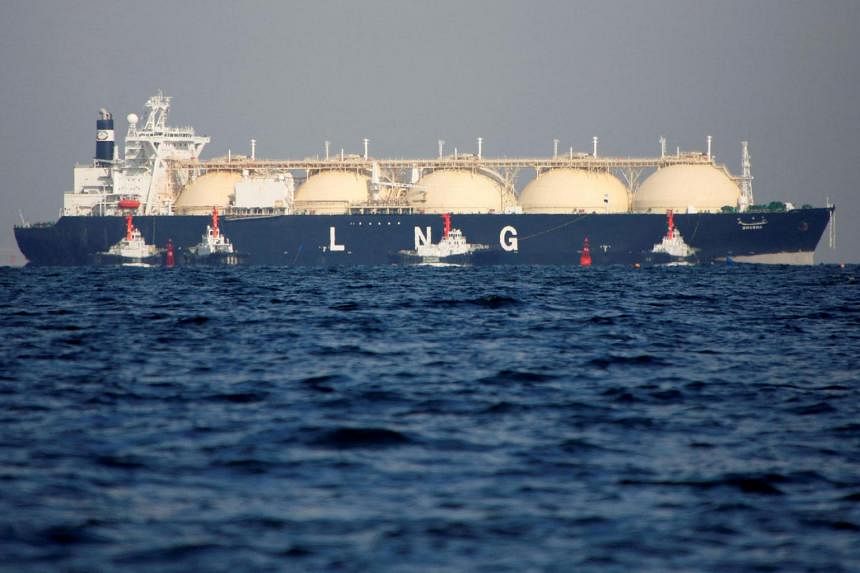SINGAPORE - The global liquefied natural gas (LNG) supply crunch triggered by the shockwaves from the Russia-Ukraine war is expected to drag out over the next few years before supply stabilises some time towards the end of the decade, according to senior industry executives gathered in Singapore for an annual conference on Thursday (July 7).
Natural gas demand has soared globally, with European countries seeking to wean themselves off Russian energy after Moscow invaded Ukraine on Feb 24.
Europe has historically relied on Russia for around 40 per cent of its natural gas, most of which is delivered through pipelines.
But since the invasion, a Western-led alliance has put in place wide-ranging sanctions targeting Moscow's energy exports - including crude oil, diesel and piped gas - forcing European buyers to scour the world for alternatives.
Speaking during a panel discussion at the 12th Asia LNG Summit held at the Shangri-La hotel, Mr Andrew Walker, vice-president of strategy at Cheniere Marketing, a unit of top US LNG exporter Cheniere Energy, said he was expecting fresh supply supported by new projects in the US and Qatar to hit the market some time around 2026 through 2027, helping to set the market back in balance.
Late last month, Cheniere Energy announced an US$8 billion (S$11.2 billion) expansion of its plant at Corpus Christi, Texas, and signalled further expansions could be on the horizon.
Mr Walker said more of such projects, not just by his company but by others based in the United States, would likely be announced down the road, spurred by growing demand for long-term purchase agreements that make up about 90 per cent of Cheniere Energy's portfolio.
He added that demand for longer-term contracts was growing as they provide more security for buyers and mitigate volatility in the spot market.
"The much-rumoured death of the long-term contract that has been discussed over the past few years has turned out not to be correct," he said.
"The volatility around prices is very debilitating, not just for the trade but also for customers. And from our perspective, which is the perspective of our customers, we are seeing them run to the safe haven of long-term structured deals."
But Mr Akshay Kumar Singh, managing director and chief executive of Petronet, India's top gas importer, who was also a panellist at the conference, said global crude oil benchmarks would need to stabilise at around US$70 to US$80 a barrel for his company to consider expanding the volume of LNG it contracted on long-term deals.
India, along with a number of sovereign buyers in Asia including Singapore, buys its natural gas on oil-linked contracts and is now grappling with high volatility and increased electricity prices.
Mr Singh said whipsawing prices and sharp spikes in the short term were making LNG less affordable for consumers. He added that some of the country's gas-fired power plants were not operational because the grid was not able to supply customers due to high LNG prices.

Mr Singh pointed out that the last time the conference was held in 2019, spot LNG prices were trading in the low single digits while the spot market in mid-June this year was trading at close to US$39. He also drew attention to how quickly prices have moved, having traded at around US$22 in May.
He said such volatility only served to confuse customers and deter them from buying LNG, adding that during the current crisis, India would look to develop alternative fuels.
But he did highlight that despite the current crisis, India's gas demand is set to expand and that targets set by Prime Minister Narendra Modi to raise the share of natural gas in the country's energy mix from 6.7 per cent to 15 per cent have not changed.
Unlike India, Singapore relies on natural gas imported as piped natural gas from Malaysia and Indonesia, and as LNG from a variety of sources, including Australia, Qatar and, to a small extent, the US for 95 per cent of its power generation requirements, with increased volatility and high prices having a huge impact on end users.
Mr Singh said that despite the current crisis, he expected to see markets stabilise in the next few years, and added that India would remain committed to expanding LNG as part of the country's energy mix.


